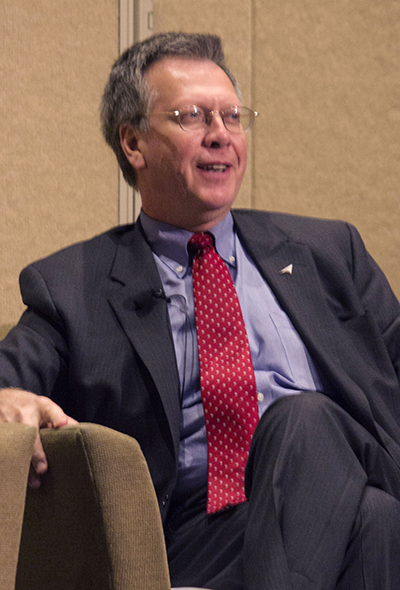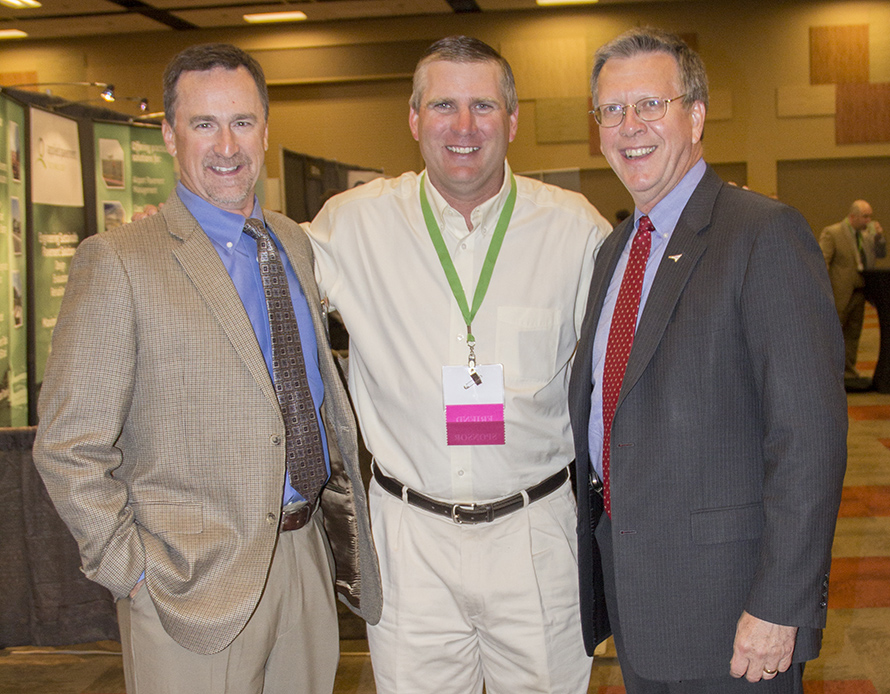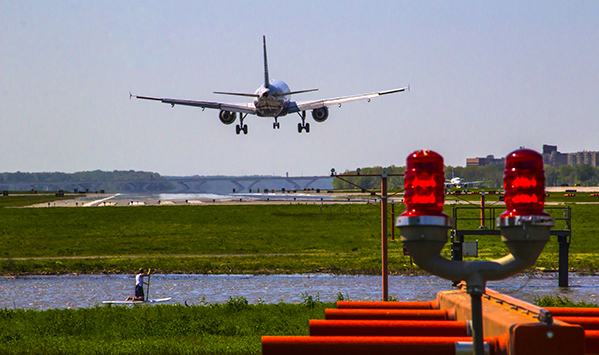By Kim J Stevens
When Dennis Roberts retired from the FAA in September as Regional Administrator for the Western Pacific Region, many doubted that he could just walk away from aviation, especially since it had been such an integral part of his life.

With more than 42 years of aviation experience, the last 14+ being with the FAA, Roberts says he’s been blessed to work in one of the most interesting and dynamic career fields one could ever imagine. “Leaving the FAA at the end of September 2018, I knew I needed a break to recharge and reevaluate what it was I wanted to do with the rest of my life,” said Roberts.
In January, after a three-month hiatus, he put the wheels in motion to start working for himself – doing things where he could leverage his experiences across the private and public sectors (including local, regional, state, domestic and international sectors of government) and give back to the industry that has given so much to him.
After considerable consideration, he landed on the business idea of Aviation Insights. ”My goal is to take my lessons learned at the school of hard knocks,” said Roberts, “and turn them into realities which may benefit others; Thus, my motto of going from Hindsight to Insights – looking back in order to look ahead.”
Amplifying that goal, Roberts said he wants to provide the aviation community, as well as communities either operating airports and/or experiencing the benefits/impacts of aviation, ways of “getting to yes” in a mutually-agreed upon manner.
Roberts first became interested in aviation growing up on a farm in western Missouri where everyone had to pull their weight to make ends meet. That meant working whatever jobs he could get. “It just happened one such job was working near our local airport,” said Roberts. ”I’d watch airplanes do touch ‘n go’s and wonder what it would be like to actually go up in one.” He’d also flagged for crop-dusters on his family’s farm (pre-GPS) and said one day that he’d be doing the flying and would let someone else “enjoy” the view from below.
“My dad, knowing the local airport manager, arranged to get me an introductory flight for my 16th birthday,” said Roberts. “I’ll never forget it.” That day turned out to be a brilliant Sunday afternoon and the flight was in a red and white Cessna 150. “After takeoff, the instructor turned the flying over to me and the rest is history.”
That early time in the cockpit led Roberts to Central Missouri State University where they had a budding aviation program. There, along with getting his pilot’s ratings, he received a degree in Aviation Technology/Management followed by a graduate degree in Aviation Safety. It’s also where he met his wife – they recently celebrated their 43 year anniversary. “Our second date was in my Dad’s C-172,” said Roberts.
Realizing he was up against Vietnam vets with considerable jet time, Roberts didn’t think he was likely to get a flying job with the airlines, so he turned to his second passion – something involving math and science. This led to a consulting engineering job where he did mechanical drafting, planning and engineering on airport projects. “A secondary bonus was flying company executives and staff around the Midwest at all hours of the day and night in all types of weather,” said Roberts. “These formative years set the stage for many years to come.”

In 1991 Roberts’ career went in a new direction, being named Colorado’s first director of the newly formed Division of Aeronautics.
“Serving as the first director was the biggest honor and privilege of my professional life,” said Roberts. “I am so proud of the collaboration and work we did starting the division – setting the stage for those that followed to achieve even greater things.”
Blessed to be selected as Division’s first executive director, Roberts’ initial directive from the aviation community was to uphold the State Constitutional mandate that “any revenues generated by aviation, shall be used exclusively for aviation purposes”. “Up to this point, those dollars had flowed to the state’s general fund,” said Roberts. “Despite many challenges, we ultimately succeeded in getting the state’s fuel tax revenues dedicated to supporting the Division and statewide aviation development.
Roberts said there were so many things he learned as the Division’s director, but probably the biggest thing was how to work with people in a way that everyone could come out feeling they got something. “It formed my general principal of “Getting to Yes,” said Roberts. “Sometimes it meant “Not No – Just maybe Not Now.”
To Roberts, it didn’t matter if he was working with members of a local community on noise issues or a U.S. Senator; He learned to treat everyone with respect, to do his homework to know their issues, and to try and reach an agreement where everyone walks away feeling that, if they maybe didn’t get everything they came for – at least they were listened to and treated fairly. “Those hard lessons came from the growing list of experiences I got as Director of the Colorado Division of Aeronautics!”
The next step in Roberts’ career was a move to airport management. His dream job was to one day become an Airport Director. That goal was partially achieved when he was asked to be the Deputy Director for the Louisville Regional Airport Authority. “My plan was to hone my skills to where someday, I could successfully compete for the Executive Director’s job.
That plan took a detour when Woodie Woodward, Associate Administrator for FAA Office of Airports, asked him to join the FAA as the Director of FAA Office of Airport Planning and Programming (APP-1). “Having worked with the FAA my entire career, I said “how hard can this be – I know the FAA.” Roberts took the position in 2004 and quickly found out that the view from the outside is definitely different from the view from the inside. “I thought I knew how FAA and the grant process worked but I had no idea what took place behind the curtain,” said Roberts. “Working with airport sponsors (albeit on the other side of the fence) on Airport Improvement Program (AIP) grants, Letters of Intent (LOI), Passenger Facility Charges (LOI) and Military Airport Program (MAP) projects, let me apply those negotiation skills of “Getting to Yes” or “Not a No – Maybe just Not Now” daily.

From that time until his recent retirement, Roberts held a number of different positions within FAA. “While I did move around the FAA in a number of capacities, I always wanted to do things that made a difference,” said Roberts. “Because of my background in local, regional and state governments, not to forget my international experiences while at Aircraft Owners and Pilots Association (AOPA), I was asked to consider taking on one of several positions as Regional Administrator.” The first was in FAA’s Northwest Mountain Region (ANM) in Seattle, WA. “Here, I was able to draw on my time in Denver as we built and completed the 3rd runway at SEATAC.” Roberts said his instrument flying experiences assisted with the Greener Skies Project where, working with Alaska Airlines, they revolutionized instrument arrival procedures using satellite navigation and automated onboard flight management systems.
When Congress directed the FAA to privatize the Flight Service Station (FSS) program in what remains the largest A-76 (outsourcing of a federal program) effort on record, Roberts was offered the position of Director of the Air Traffic Organization’s (ATO) Flight Services Division back in the “other Washington”. Ironically, while at AOPA, he had led a study effort to evaluate the impacts on general aviation should the FSS services be outsourced and/or privatized. “My challenge was to make sure the vendor (Lockheed Martin Flight Services) met all the contractual requirements and that users of the National Airspace System (NAS) continued to have aviation weather services in an accurate and timely fashion.
____________
In 2010, another opportunity presented itself as Director of the ATO’s Airspace Services Division. “This job pushed me to learn how to better integrate my past experiences of flying and airports with air traffic control and flight procedures,” said Roberts. “Starting out, we began by taking a more systematic approach to airspace design by relying on satellite communication, navigation and surveillance (CNS) versus ground-based technology.” This program started as the “Optimization of Airspace and Procedures in a Metroplex” or OAPM. “Because Administrator Huerta had a hard time saying “Oh-App-Um”, we changed the name to just the Metroplex Project,” said Roberts. “This consisted of 21 major metropolitan areas where we could implement NEXTGEN satellite procedures (for multiple airports) in a large geographical area.”
Roberts said this job stretched him in ways he never imagined. “I had to learn how air traffic actually works, the logic behind flight management systems, how FAA Flight Standards Division evaluates and mitigates flight risks as part of a requirements analysis and how human factors play out in the Computer-Human Interface (CHI) loop,” said Roberts. “Remembering how we started with the initial CDA/OPD in Louisville and now watching aircraft/crews executing these procedures everywhere across the NAS, was truly unbelievable.”
It was the Metroplex Project work in ATO Airspace Services that set Roberts up for his final two positions as regional administrators (RA) in FAA’s Southern Region (Atlanta) and the Western-Pacific Region in Los Angeles. Both had Metroplex challenges as their core work.
In Southern (ASO) Region, Metroplex projects were underway in Atlanta, Charlotte and South-Central Florida. These 3 accounted for a huge percentage of the NAS’s total air traffic. Because of their close proximity to one another, Roberts said it was imperative that each be carefully integrated with the others. “Combining this with the large number of flight schools across the region and the volume of special-use military airspace, my job in ASO was interesting to say the least.”
While Roberts had initially planned to retire from federal services in ASO, he received a call from FAA Administrator Huerta’s Chief-of-Staff in November 2016 stating the RA position in FAA AWP (Los Angeles) was about to become vacant. “The COS said the Administrator would consider it a personal favor to him if I would move to Los Angeles and take this position,” said Roberts. “Because of my experiences with Metroplex, air traffic/airports and understanding of federal, state, regional and local community engagement, he felt I was the right person for the job.” So, in February 2017, he moved to his third RA job (out of 9 total regions) where he remained for 19 months until his retirement at the end of September 2018.
Being a regional administrator is a job Roberts frequently responded to by saying, “You are responsible for everything with authority over nothing.” Unlike the days when the Regional Director was essentially the “czar” with ultimate control over his or her region, Roberts said today, the RA serves as the executive “eyes, ears and voice” of the FAA Administrator. “With the straight-lining of nearly all regional office lines-of-business to headquarters, the RA is primarily a problem-solver, facilitator and/or mediator,” said Roberts. “Having no direct line authority over anyone, the RA must rely on his/her relationships and interpersonal skills to reach consensus and move the needles. This is in addition to being the custodian/caretaker of the regional office facilities.”
For Roberts there have been many milestones that have impacted his career and life. “I’d say the thing I’m most proud of is looking back to those who have worked for me and seeing how they have succeeded,” said Roberts. “To have someone say “you made a difference in my life” is the greatest honor and reward I can imagine. My goal has always been to leave something or someone better than when I first encountered it/them.”
From a technical product perspective, Roberts said the work they did in Louisville, KY with UPS, Boeing, NASA, MIT-Lincoln Labs and FAA developing Continuous Decent Arrivals (CDA’s), now called Optimized Profile Descents (OPDs), ranks right up there. “These are now one of the cornerstones for NEXTGEN, allowing aircraft to descend from flight levels to touchdown at nearly flight idle settings. As former FAA Administrator Huerta used to say, these OPDs allow aircraft to move from what used to be like walking down the stairs to literally sliding down the banister.”
The defining moment for Roberts was riding the jump seat on a commercial flight from Washington-Reagan Airport to Phoenix, AZ where they flew the EAGLE 3 Arrival (RNAV STAR) his team had developed. “We’d always said NEXTGEN and SATNAV would enhance safety by reducing the potential for ‘hear-back / read-back’ errors. Well, I saw and heard (or didn’t hear) it for real on that ride,” said Roberts. “The crew received our arrival clearance from Albuquerque Center (ZAB) at FL 360 (250 miles from landing) and only talked to air traffic 4 times until we reported clear of the runway to ATC Ground at PHX – Awesome!”
Some of Roberts principals are: Trust, yet verify; Never burn a bridge you may have to cross again; Never ask someone to do something you haven’t or aren’t willing to do yourself; When in doubt – would you be comfortable if your action(s) are on tomorrow’s front page of the NY Times; and Don’t Forget – Honesty is what you do when no one is watching.
Roberts believes it’s his mid-western, farm upbringing that influences his actions and many of his relationships. “You don’t make something more difficult than it needs to be and you never make someone feel anything is too complicated for them to understand,” said Roberts. “It’s your failure to communicate if the receiver of the information doesn’t understand.”
“Everyone has always said that I’m kind of folksy, and like to tell stories to make a point,” said Roberts. “Maybe they are right.”
You can reach Dennis Roberts at, AviationInsights01@gmail.com



